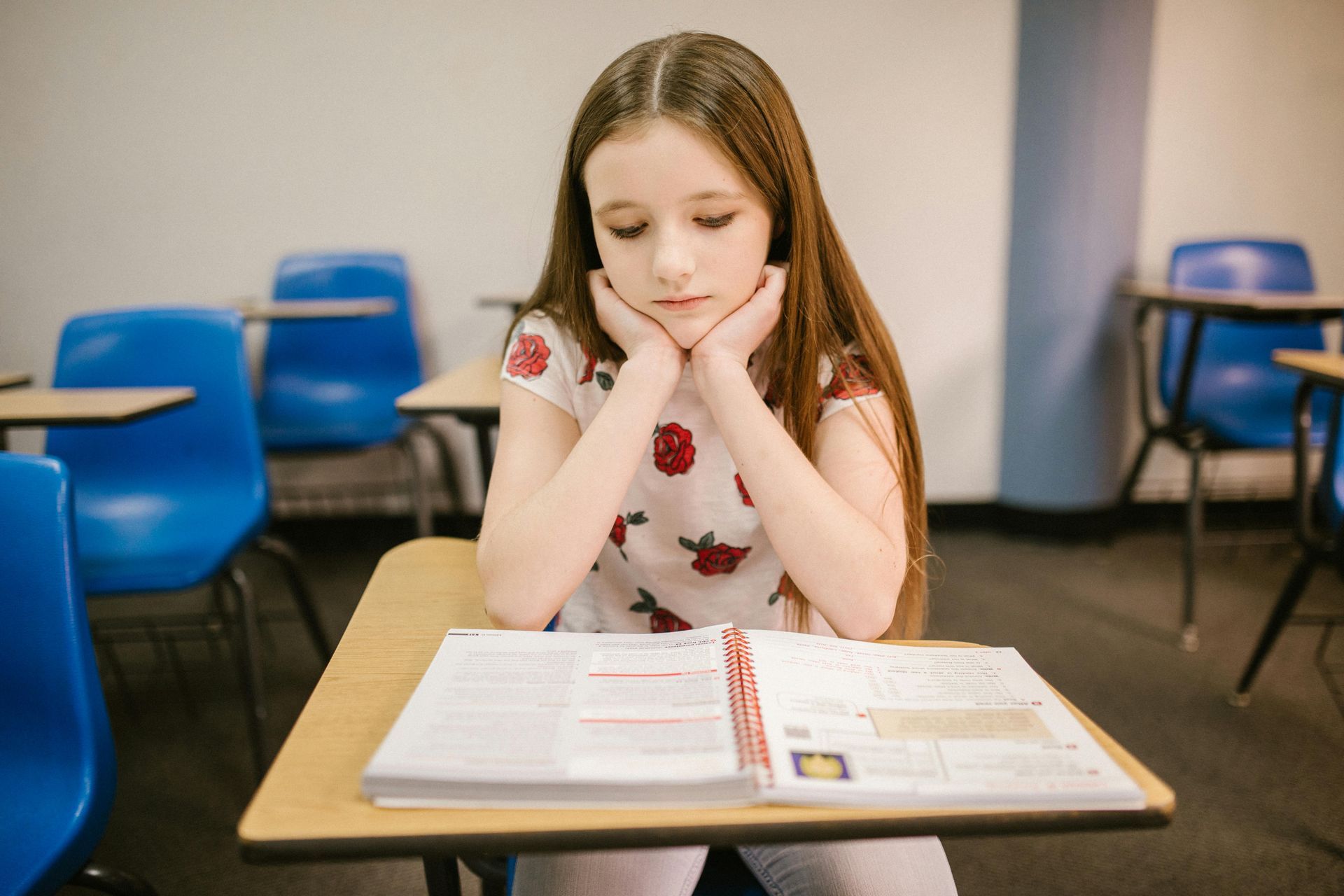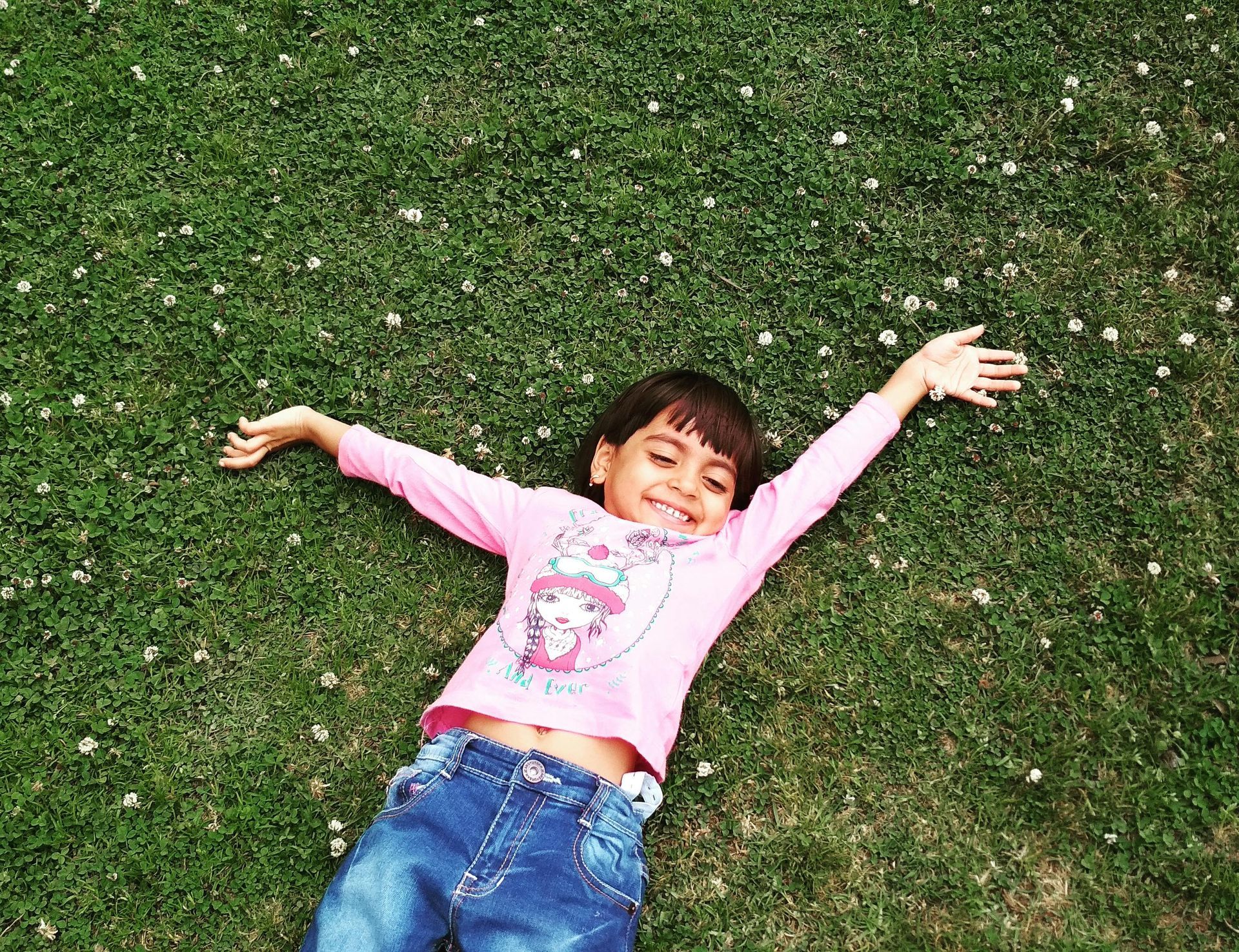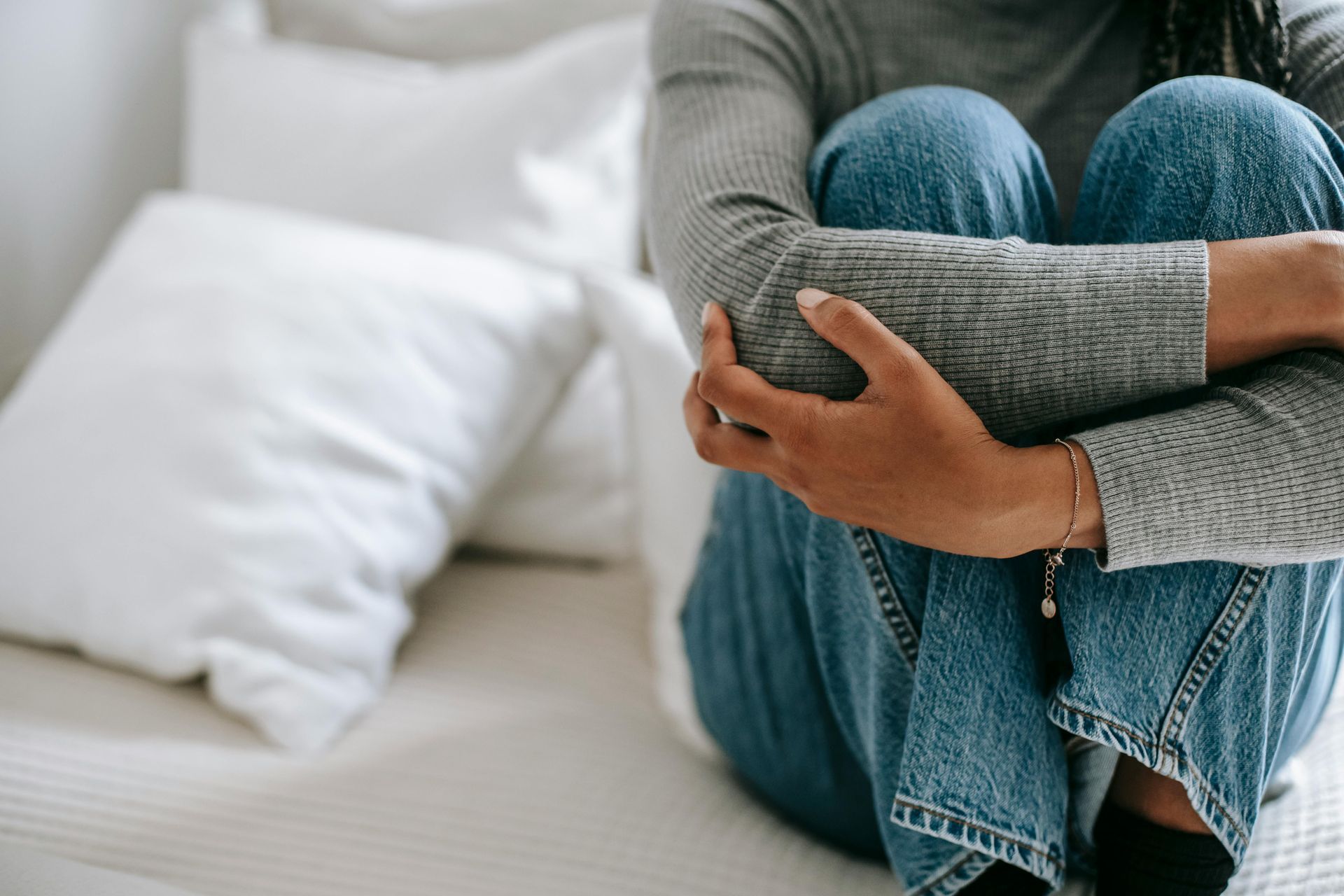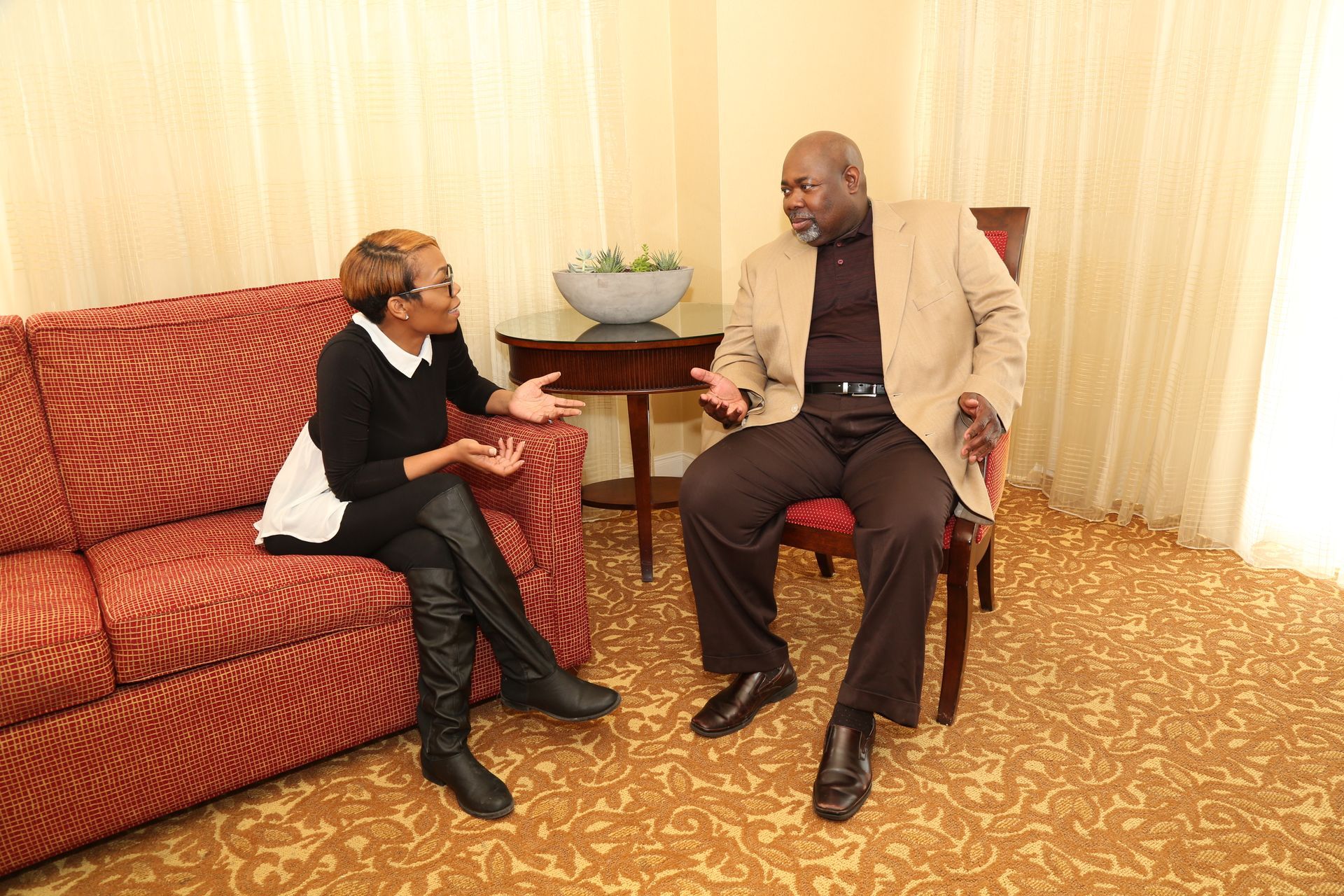Uncovering the Truth About Anxiety in Children: Causes, Symptoms, and Treatment-💜
CNS Healthcare • February 7, 2025
Anxiety in children is a real mental health challenge that affects up to 1 in 5 children. If left ignored, it can create real problems including social phobia, irritability, anger, weight loss, and more. However, if you suspect your child is becoming anxious, all is not lost! There are actions you can take today to start getting them back on track.
This blog will guide you through
anxiety causes, symptoms, and effective treatment options so you can start to recognize the signs early on. If you are looking for ways to help your child feel better, keep reading to get our top tips and advice.
Key Takeaways
- Anxiety affects up to 1 in 5 children, showing up as physical symptoms (stomachaches, headaches) and behavioral changes like avoidance or irritability.
- Common causes of anxiety include family stress, school pressures like bullying or tests, and major life events such as moving or trauma.
- Treatments include Cognitive Behavioral Therapy (CBT), family therapy for better communication at home, and medication in extreme cases.
- Parents can help by creating routines, offering reassurance, and seeking professional help when needed.
- Early support improves a child’s mental health and helps them manage fear and worries effectively over time.
What is Anxiety in Children?
Anxiety in children occurs when
fear, worry, or stress starts affecting their daily life on a regular basis. When these feelings last continuously over six months or prevent them from enjoying their normal day to day activities, these worries can add up and start to become a real problem.
Unfortunately, this disorder is so prevalent that up to
1 in 5 children may develop an anxiety disorder during their childhood, making it one of the most common mental health issues among young people.
You should also be aware that not all anxiety issues are created equal. There are five main types of childhood anxiety:
Separation Anxiety Disorder, Specific Phobias,
Social Anxiety Disorder,
Generalized Anxiety Disorder, and Panic Disorder. You'll find that some children might have extreme fear of being away from family members (Separation Anxiety), while others only deal with phobias.
Some children may experience panic attacks in social situations like school events. Additionally, these anxious thoughts can often surface as physical symptoms. Ailments like stomachaches or headaches can quickly disrupt a child’s ability to focus on schoolwork, play with others, and cause social issues.
Anxiety isn’t just shyness; it’s an intense feeling that affects how children think, act, and behave.
Common Causes of Anxiety in Children
Children feel anxious for many reasons, and it's often tied to their environment or experiences. Stressful situations, whether present in their home or social life, can affect their emotional well-being and lead to ongoing anxiety over time.
Family-related stressors
Family problems are a major trigger of anxiety in both young children and older children alike. For example, living in an
unstable home environment where arguments, separation, or divorce between parents are present can be a recipe for increased stress and creating anxious children.
The
death of a family member is another unfortunate family situation that can create worry, sadness, and anxiety in children.
Genetics may also play a huge role in your child’s behavior. A family
history of mental health problems like depression or childhood anxiety disorders will automatically raise the risk of a child experiencing anxiety themselves.
Additionally, stressful events such as food insecurity or poor housing conditions can exacerbate intense anxiety symptoms for school-age children or younger.
School and academic pressures
School can be stressful for kids! They're balancing high expectations to perform well academically from both their parents and teachers, taking tests, and doing homework, all while trying to maintain good grades and keep a good attendance rate.
Fear of failure can also add to the pressure and push many children over the edge into anxiety or a panic disorder.
Bullying is another major cause of school anxiety. Negative social interactions with other children and
struggles making friends or fitting in may leave kids feeling alone and worried daily, damaging their confidence.
These ongoing pressures can impact a child's mental health and ability to focus on learning tasks effectively. Seeking help early is a good idea if they are showing signs of excessive worry when it comes to school performance or relationships.
Traumatic events or changes in environment
Stress at school can increase if a child is also facing a traumatic life event. Unfortunate events like
house fires, car accidents, or natural disasters affect a child’s life deeply, creating fear and feelings of anxiety that linger long after the event itself has passed.
Significant changes in their daily routine can also impact them negatively. Picking up and moving to a new school or neighborhood can cause social phobia, specifically, worrying about fitting in and making new friends. Adapting to these types of transitions takes time, but early intervention can help children ease into new routines and soften the disruption to their daily life.
Even small changes in daily activities can feel overwhelming for younger children.
Signs and Symptoms of Anxiety in Children
Children with anxiety may display a shift in how they usually feel, act, or even how their bodies react. Keep reading to find out what signs to watch for, and how to help them if you're worried they're becoming anxious.
Physical symptoms (e.g., stomachaches, headaches)
Anxiety in children can appear in many forms. Physical symptoms are often clear signs of anxiety, despite their subtle nature. Here are some things to look out for:
- Stomachaches are common and may get worse in stressful situations, like starting school or preparing for a test.
- Headaches often appear when your child feels overwhelmed, worried, or nervous.
- Muscle tension can occur when anxiety causes the body to stay on high alert for danger.
- Hands or legs may shake due to increased heart rate and blood pressure in stressful moments.
- Frequent bathroom visits may occur because stress impacts the digestive system.
- Rapid breathing or shortness of breath could signal that your child is feeling panic or fear.
Behavioral changes (e.g., irritability, avoidance)
Children’s anxiety can be easy to spot if you pay attention to changes in their behavior. These changes often impact their daily life and their interactions with others. Below you'll find a list of behavioral changes that you can look out for:
- A child may become easily irritated or angry. Little things might upset them more than usual.
- A child might avoid school, social events, or specific places that make them uneasy.
- They may experience restlessness which could look like constant movement or an inability to sit still.
- Fear of being alone may increase. This could look like refusing to sleep alone or clinging to parents during the day.
- Social withdrawal that happens suddenly. Kids may begin to avoid friends, stop playing entirely, or prefer quiet spaces over interaction.
- Anger bursts that occur frequently. Anxiety can trigger yelling or frustration over simple problems.
- Concentration issues are another hint of anxiety-related behavioral changes. Completing homework or listening in class may seem increasingly difficult for your child.
- Changes in appetite are possible too. Your child may start to eat more than usual, or lose interest in food altogether.
If a child is experiencing one or more of these changes, it could point to struggles with their mental health and behavior caused by anxiety.
Emotional symptoms (e.g., excessive worry, fear)
Anxiety can also take control of your child’s emotions. One way to recognize this is by noticing if
they feel more worry or fear about things that others might not notice. Because of this, their feelings can quickly become overwhelming, affect their daily life, and make simple tasks more difficult.
Here are a few examples of emotional symptoms your child may experience:
- Your child might constantly worry about bad things happening, even when there is no real danger.
- They often cry or feel upset more than other kids their age.
- Fear of a specific thing may take over their thoughts. For example, being around dogs or being alone.
- They may ask the same questions repeatedly to get reassurance from you.
- Minor events, like being late to school, might feel very overwhelming to them.
Treatment Options for Childhood Anxiety
Childhood anxiety can be treated in a variety of ways based on the child's needs. Support from professionals and loved ones will often play a key role in helping children overcome their anxiety.
Cognitive Behavioral Therapy (CBT)
CBT can help an anxious child manage their anxiety by changing negative thought patterns. It focuses on teaching
practical coping skills
to handle specific fears, obsessive-compulsive disorder, or unwanted thoughts.
Health professionals will first help your child identify what is triggering their worries, and then develop a step by step solution to stop their anxiety before it even starts.
Sessions for CBT are typically short, but very effective. Many children see
improvement in just a few sessions with the right treatment plan. Parents play an important role here too, as open conversations at home will reinforce new strategies the child has learned during therapy.
This approach works well for common types of anxiety like posttraumatic stress disorder or social fears that disrupt everyday life.
Family therapy and parental support
Family therapy can help improve a child's family life by addressing how each member communicates and supports one another. Therapy sessions are centered around learning new ways to
create a safe space for your child to express their fears and worries.
Family therapy can also teach you strategies to avoid overprotective behaviors, which may increase a child’s anxiety. A family therapist can help you
recognize healthy responses for kids when they are facing stress or fear.
Parental support includes learning practical tools like setting daily routines at home. Keeping a consistent schedule will help children feel more secure during difficult times. Practicing relaxation techniques as a family can also bring a sense of calm into their daily activities.
Small actions like
encouraging physical activity or offering reassurance in tough moments can also make a big difference in managing childhood anxiety.
Medication in severe cases
Despite the many benefits of therapy, it may not always be enough for
severe anxiety in children. In such cases, doctors often recommend medication as part of a child's treatment.
Selective serotonin reuptake inhibitors (SSRIs) like Fluoxetine (Prozac) and Sertraline (Zoloft), or serotonin-norepinephrine reuptake inhibitors (SNRIs) such as Duloxetine (Cymbalta), are common choices that can help
balance brain chemicals
and reduce anxiety symptoms.
While effective, these medications
may take weeks to months before showing results. Some children will experience side effects, including changes in appetite or mood swings. Rare but serious risks can also include suicidal thoughts, so it's essential to be monitoring them regularly.
And of course, you'll always want to consult a healthcare professional or adolescent psychiatry expert before starting any medication for your child’s mental health needs.
Conclusion
Anxiety in children can feel overwhelming, but help is out there. Now that you've learned about its causes, symptoms, and treatments, you can be better prepared to combat it head on. Early support can make a big difference in your child’s life.
Simple steps like talking openly or seeking professional help from organizations like
CNS Healthcare of Michigan matter, while therapy and other treatments work well for most kids.
Take action now
to ensure your child feels supported and safe every day.
FAQs
1. What causes anxiety in children?
Anxiety in children can stem from many factors, including mental disorders, medical conditions, and specific fears of objects or situations. Early childhood experiences and family history may also play a role.
2. What are the common symptoms of anxiety in kids?
Children with anxiety may have a hard time concentrating, show physical signs like sweating or trembling, or avoid certain activities due to fear. Children of different ages will often display different symptoms.
3. How is anxiety diagnosed in children?
The first step involves consulting primary care providers or mental health services for an evaluation. Professionals like social workers and psychiatrists use tools such as fact sheets from the American Psychiatric Association to identify psychiatric disorders.
4. What treatments are available for childhood anxiety?
Treatment options include cognitive behavior therapy (CBT), behavioral treatment plans, and at times, anxiety medicines, when neccessary. These approaches aim to help kids manage their emotions more effectively.
5. Can other conditions affect a child’s experience with anxiety?
Yes, conditions like attention deficit hyperactivity disorder (ADHD) or other mental illnesses can impact how children experience anxiety. Seeking professional help ensures proper care for both issues if they occur together.
Newsletter
We will get back to you as soon as possible.
Please try again later.
Recent Posts
SHARE THIS POST WITH YOUR FRIENDS
*Unauthorized use of pictures of consumers is a violation of Chapter 7 of the Michigan Mental Health Code, 1974
CNS Healthcare is funded in part by the following:













